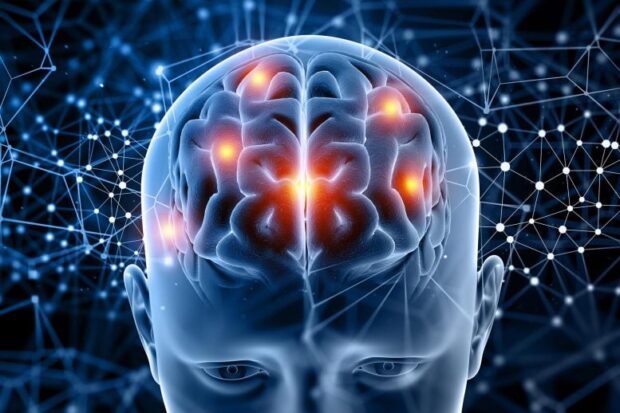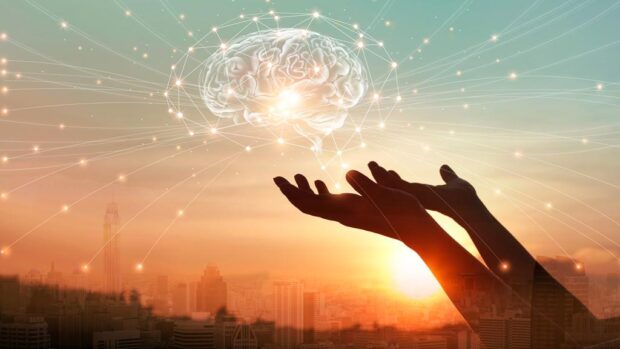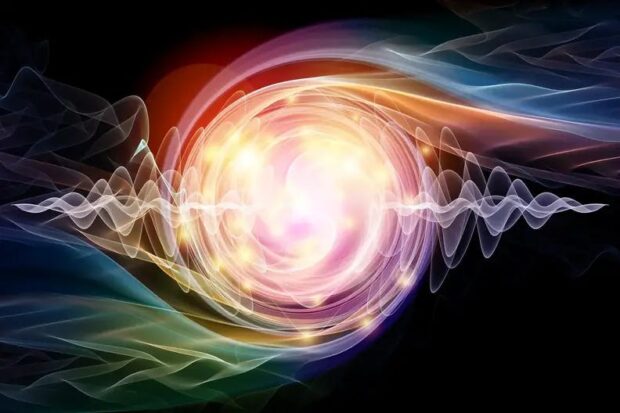Manifestation has long been associated with spirituality and intention-setting, but modern neuroscience is increasingly showing that these practices have measurable effects on the brain and body.
Manifestation, often defined as the process of bringing thoughts into reality through focused energy and belief, aligns surprisingly well with how neural networks process attention, emotion, and motivation.
By mapping these principles to brain activity, we begin to see how “energy flow” may be less mystical and more about how our minds shape perception and behavior.
The Neuroscience Behind Thought and Intention

At its core, manifestation begins with thought. Neuroscience reveals that when we focus on a specific goal, the reticular activating system (RAS) in the brain filters information that aligns with that focus. This selective attention mechanism ensures that we perceive opportunities relevant to our dominant thoughts. Essentially, what we dwell on becomes what our brain prioritizes.
This aligns with findings from neuroplasticity research showing that repetitive mental focus physically reshapes neural pathways. Thoughts are not passive—they train the brain to recognize patterns that confirm and reinforce our internal expectations. Over time, consistent visualization and positive expectancy condition both perception and behavior toward desired outcomes.
How Energy Flow Connects to the Brain-Body Network
The concept of “energy flow” in manifestation often refers to emotional coherence—the state where the heart, brain, and nervous system operate in synchrony. Neuroscience has confirmed this relationship through studies on heart rate variability (HRV) and vagus nerve activation. When emotional energy is positive, HRV stabilizes, improving focus, creativity, and emotional regulation.
Similarly, neurochemicals like dopamine and serotonin respond to anticipation and visualization, providing physiological feedback that strengthens motivation. This interconnected system explains why emotional alignment can feel like “flow” or momentum—it is literally the nervous system optimizing itself for action.
Did you know?
Research at the HeartMath Institute found that focused positive emotion can create measurable electromagnetic changes in heart rhythm patterns, influencing brainwave states and even affecting people nearby.
Cognitive Training and the Forgotten Laws of Manifestation

Modern science may describe it differently, but the underlying wisdom of ancient manifestation principles remains intact. Concepts like belief, focus, gratitude, and emotional alignment correspond directly to cognitive and emotional regulation. The Forgotten Laws of Manifestation provide a framework that bridges these timeless ideas with modern evidence, showing how intentional focus can reshape both mindset and outcomes.
By studying brain plasticity, reward circuits, and mirror neurons, neuroscience validates that what we repeatedly think and feel becomes the blueprint for our perception of reality. In other words, energy flows where attention goes—and the brain follows suit.
Laws of Manifestation offer deeper insights into this mind-body connection, teaching how consistent thought alignment rewires behavior, attitude, and opportunity recognition.
The Brain’s Role in the “Law of Attraction”
For years, skeptics dismissed manifestation as pseudoscience, but neuroscience offers a practical explanation for why it works. When people set a clear goal and hold it vividly in their mind, the prefrontal cortex—responsible for planning and decision-making—engages in mapping out steps to achieve it.
Meanwhile, emotional imagery activates the limbic system, associating positive emotions with that outcome. Together, these processes enhance motivation and persistence, much like athletic mental rehearsal improves performance.
This cognitive-emotional loop effectively mirrors what many traditions describe as aligning energy with intention—the brain is literally rewiring to support the desired reality.
How Visualization Activates Neural Pathways
Visualization, a cornerstone of manifestation, is not simply “daydreaming.” Neuroimaging studies show that the same brain regions light up during mental imagery as during actual experience. The motor cortex, visual cortex, and basal ganglia activate whether you imagine or perform an action.
In practical terms:
- Visualizing success primes the brain for recognition of relevant cues in reality.
- Emotional immersion during visualization strengthens the neural imprint.
- Consistency trains the subconscious to interpret imagined goals as attainable.
When combined with gratitude and mindfulness, visualization becomes a form of neural rehearsal, increasing the likelihood of aligned decisions and sustained motivation.
Emotional Frequency and Quantum Resonance

While neuroscience deals with measurable biological processes, it also opens discussions about quantum-level phenomena. The brain’s electrical signals generate measurable electromagnetic fields. Though small, these fields interact within the body’s energy system.
In quantum biology, researchers suggest that electron spin and molecular vibration may influence how cells process energy. While still a developing field, it offers intriguing parallels to manifestation teachings that describe emotions and thoughts as “vibrations.”
| Concept | Neuroscientific Parallel | Effect |
| Energy flow | Neural and emotional coherence | Improved regulation and focus |
| Vibration or frequency | Brainwave and heartwave patterns | Emotional alignment |
| Attraction | Attention and expectation bias | Selective perception and action |
The Reticular Activating System: Your Brain’s Manifestation Filter
Think of the RAS as the brain’s gatekeeper of perception. It decides what information deserves attention based on repeated mental patterns. When you affirm a belief or visualize a goal, you’re programming your RAS to recognize matching evidence in the world.
For instance, after buying a new car, you suddenly “see” that model everywhere. That’s not a coincidence—it’s attentional bias in action. Manifestation harnesses this same process deliberately, focusing the brain on opportunities rather than obstacles.
A consistent mindset thus becomes a biological signal for the RAS to prioritize data supporting your intention, reinforcing belief, and measurable progress.
Bridging Ancient Wisdom and Modern Science
Both neuroscience and manifestation center on one truth: energy follows focus. Ancient traditions called it “prana” or “chi,” while today we measure it as bioelectrical signaling and emotional regulation. Gratitude boosts dopamine. Meditation reorganizes neural networks. Visualization strengthens pathways tied to action.
When stripped of terminology, both systems describe the same process—using focused awareness to shape experience. The difference lies only in language, not in function.
“As within, so without” now has a neural explanation: the brain projects inner expectations outward by filtering reality accordingly.
Conclusion
Manifestation and energy flow are not at odds with science. Neuroscience confirms that focused attention, emotional regulation, and repetition physically transform the brain’s wiring and perception of opportunity. The so-called “energy” is the dynamic interplay of neural, emotional, and physiological coherence—what we feel as alignment or flow.
The more deliberately we guide our thoughts, emotions, and intentions, the more efficiently the brain tunes reality to match. Manifestation, then, is less about mystical attraction and more about mastering the science of conscious focus—a truth that both modern neuroscience and the Forgotten Laws of Manifestation now beautifully affirm.




